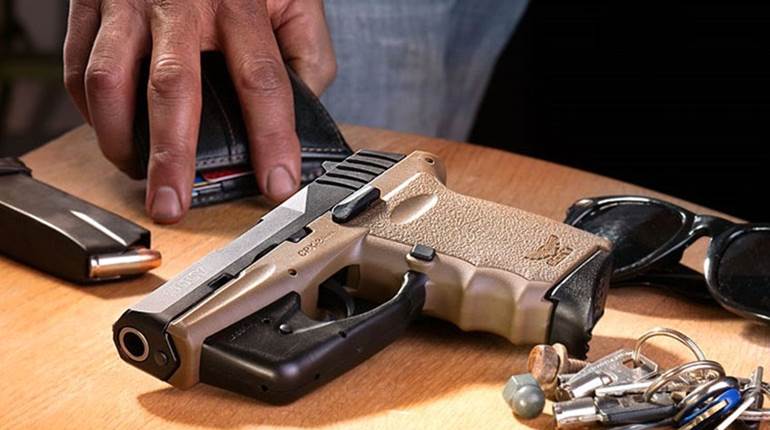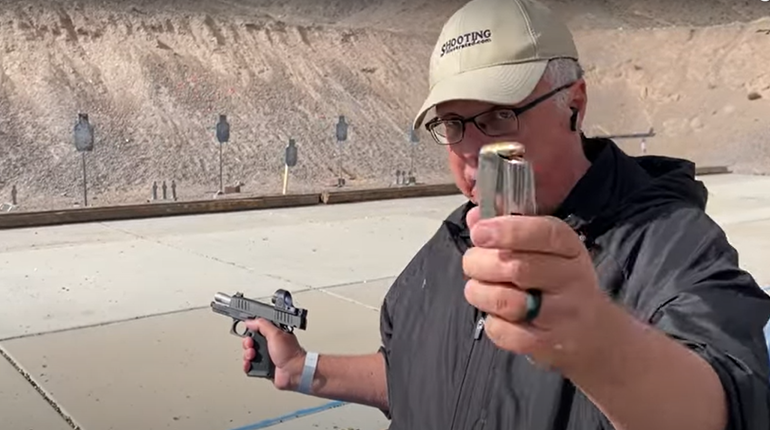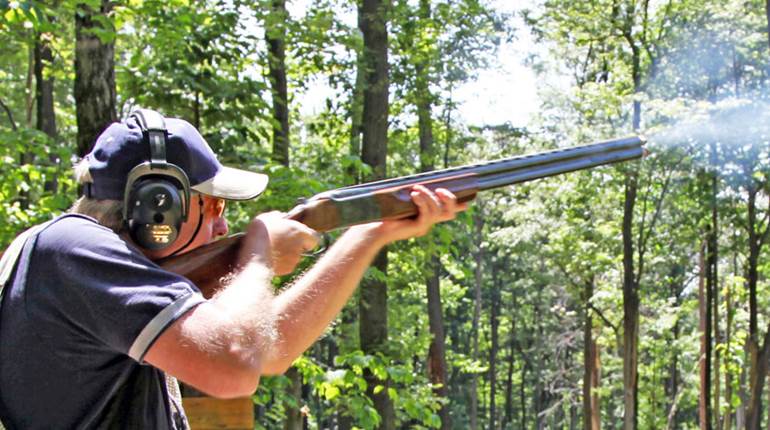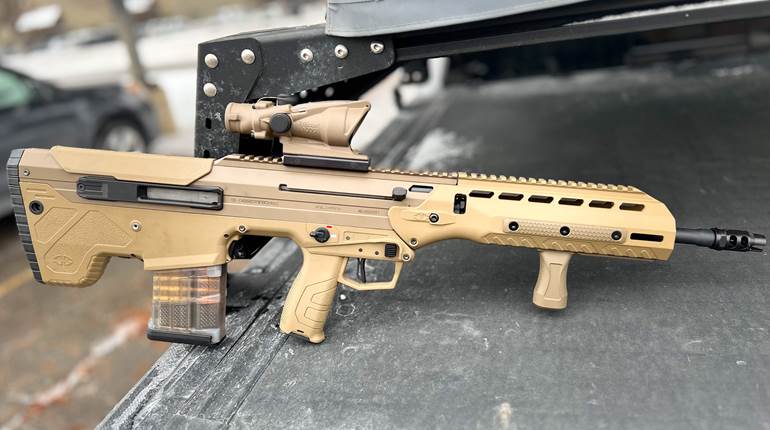
1/30/2013
Within the world of AR-style rifles, piston-driven guns offer the promise of a cleaner and cooler-running operating system; but regardless of their potential advantages over the traditional direct-gas design, most have multiple issues with durability and reliability. That shouldn’t be at all surprising considering that, despite its faults, the AR-15/M16 system is more than proven. After all, it’s been in service for a half-century, so the gun and all of its parts have been subjected to multiple environmental and endurance tests. On top of that, modifying the AR-15 design by installing a new piston operating system creates new and often unexpected stress points that can accelerate wear and cause breakages to appear in surprising places such as the mouth of the buffer tube, the well for the bolt cam and the nose of the charging handle. As a result, many AR-15/M16 users have come to view piston guns with skepticism. But one piston gun that stands out from the crowd is the Adcor Defense Brown Enhanced Automatic Rifle, or B.E.A.R. As one of a half-dozen surviving candidates for the second phase of the U.S. Army’s Individual Carbine competition and M4 Product Improvement Program, it has been thoroughly tested according to strict military protocol by both commercial and government labs.
The gun is named after Mike Brown, Adcor’s lead engineer and the driving force behind the project. Adcor was founded in 1967, and it has a long history of making precision components for military aerospace contractors as well as for the bottling industry. The company got its foot in the door of the firearm industry by making receivers. In fact, it is still a major supplier of finished receivers for Colt. A few years ago, when the Army initiated its Individual Carbine competition, Brown looked at the M4 and the other piston guns on the market and said, “I can build something better.”
One might argue that it is better to start with a blank sheet of paper, but the M4 has a lot of advantages that are hard to replicate. It is lightweight, balanced and extremely compact, but more than that, it is uniquely versatile and accurate. Few alternatives can match the M4/M16 in all of those areas, and even though the weaknesses of direct gas impingement operation are, in my opinion, exaggerated, they are real enough that exploring alternatives is certainly worthwhile.
Perhaps the most vexing problem is the build-up of heat and carbon in the receiver and the bolt assembly. After 400 rounds, the magazine well is too hot to touch, and that is one part of the gun that must be handled to keep it operational. For troops in contact with the enemy, maintaining a high volume of fire is a matter of survival.
In order to keep heat and fouling out of the action, the B.E.A.R. uses a proven short-stroke gas piston system of operation that Brown has refined for better accuracy and simplified for ease of disassembly and maintenance. The B.E.A.R.’s gas block houses a piston and return spring. The front of the gas block has a two-position adjustable regulator, one for .223 Rem. and another for 5.56x45 mm NATO. Why? Because most commercial .223 Rem. ammunition often leaves military guns undergassed, while 5.56x45 mm NATO military surplus can overgas commercial guns. The ability to switch back and forth allows users to improve the reliability and durability of their guns with both types of ammunition. The piston impinges on an operating rod that is permanently attached to the bolt. With the original design of the B.E.A.R., the base of the operating rod was attached to the bolt by machine screws in a manner similar to the gas key. Extended testing as part of the M4 replacement program has brought about a new design where the base of the operating rod is an integral part of the bolt, while the operating rod itself is pressed and welded to the base. Also, the charging handle has been beefed up; thicker wall dimensions and gussets were added to the nose. In both piston and direct-gas guns, that area is under a lot of stress.
Another issue with gas-piston AR-style rifles is carrier tilt. Brown addressed that issue by first making the operating rod an integral part of the bolt carrier. Secondly, the vertical travel of the bolt assembly is further limited by a small opening in the fore-end that guides the operating rod and, by extension, the bolt assembly along its rearward travel during the firing cycle. Lastly, and yet another product of the M4 tests, is the addition of four anti-tilt pads to the rear of the bolt carrier. Thus, the vertical travel of the bolt assembly is limited by the operating rod at the front and the anti-tilt pads at the rear of the carrier.
The final modification to the bolt came about as a result of the experiences of U.S. troops serving in Iraq. Extremely fine dust and other contaminants can clog up the action of a standard M4 or M16. To address that issue, Brown added a polymer dust wiper to the bolt carrier that seals the ejection port when the bolt is in battery. That helps prevent foreign material from entering the action. It also “wipes” any debris out that may enter the receiver. In order to accommodate the wiper, Brown moved the detent that holds the ejection port cover closed from the top of the cover to the rear.
In most other respects, the B.E.A.R. looks and operates much like a standard AR-style rifle. It uses the same buffer and buffer tube, and its outside dimensions and contours are the same. The flat-top upper receiver has an A2-style shell deflector behind the ejection port and a forward assist plunger. Like a standard AR-15, it is chambered in 5.56x45 mm NATO and accepts standard commercial and military surplus AR-15 magazines. Additionally, Adcor chose popular aftermarket components, such as a collapsible Magpul MOE stock and pistol grip.
But once you look at the B.E.A.R.’s quad rail fore-end, major differences start to appear. Its fore-end is unique to the gun and sleek and trim enough to comfortably grasp. It is a modular assembly consisting of three pieces. The top piece stays with the gun, but the bottom two parts can be removed with a cartridge tip or firing pin. A non-reciprocating charging handle rides in a horizontal slot in the fore-end. The charging handle folds out of the way when not in use, so it won’t snag on obstacles or equipment. It is also reversible for left-hand use.
More improvements can be found underneath the fore-end. A threaded lock ring simplifies attachment of the rail, thus relieving armorers and gunsmiths of a major hassle. Also, the gas block is housed in the rail. Like the lower fore-end pieces, it can be removed with a firing pin or cartridge tip for cleaning and maintenance. Mounting the gas block in the fore-end leaves the barrel free floating for maximum accuracy.
Apart from the stock and pistol grip, Adcor makes most of its own parts in house, using 7075-T6 aluminum for both the upper and lower receivers, as well as the fore-end. In fact, the only major component sourced from outside suppliers is the FN-produced barrel, which measures 16 inches and has a stepped M4 profile and an A2-style flash hider. It is cold hammer-forged for longer life and chrome-lined for corrosion resistance, and its 1:7-inch twist stabilizes the heaviest bullets. The 16-inch length is standard, but other lengths and chamberings are available.
During testing, the gun’s single-stage trigger broke at just over 6 pounds with no creep and minimal take-up and overtravel. To evaluate accuracy, I fitted a Leupold Mark 4 LR/T 8.5-25X 50 mm scope to the B.E.A.R. with a LaRue Tactical SPR 1.5 one-piece quick-release mount. The combination delivered sub-m.o.a. accuracy with the 77-grain Black Hills load and with 55-grain Hornady TAP. Those are excellent results for an AR-style rifle.
To get an idea of its handling qualities, I swapped out the Mark 4 LR/T in favor of a Leupold HAMR and Deltapoint combination and set up an array of targets at short to medium ranges. Using dummy cases I set up some failure drills. In those situations, I found the B.E.A.R.’s forward charging handle to be a real asset. With the aid of the forward charging handle, I could charge the bolt without raising my head out of shooting position, and, unlike a standard direct-gas gun, I could lock the slide using only one hand by pulling back on the charging handle with the first two fingers of my support hand and pushing down on the tail of the bolt stop with my thumb. There were no malfunctions with the gun using a variety of commercial and surplus magazines from Colt, Brownell’s and H&K.
Like all piston guns, the B.E.A.R. is rather expensive, but considering it has advanced to Phase II of the Army’s Individual Carbine competition, it has already proven itself through a lot of harsh testing. For that reason alone, the B.E.A.R. from Adcor Defense is worth watching.
Manufacturer: Adcor Defense, Inc.,; (888) 612-3267; www.adcorindustries.com
Caliber: 5.56x45 mm NATO (.223 Rem.)
Mechanism Type: short-stroke piston, gas-operated semi-automatic,center-fire rifle
Receiver: 7075-T6 forged matte-black aluminum alloy
Barrel: 16.1", chrome-lined, hammer-forged matte-black steel
Rifling: six-groove, 1:7" RH twist
Magazine: one 30-round Magpul detachable box; compatible with other commercial and military surplus AR-15/M16 magazines.
Sights: none supplied, Picatinny rail for attaching optics
Trigger: single-stage; 6-lb., 2-oz. pull
Stock: Magpul MOE six-position collapsing: length of pull, 10¼"-131⁄4"; drop at heel, 1/2"; drop at comb, 1/2"
Overall Length: 323⁄4" (stock fully compressed) to 353⁄4" (stock fully extended)
Weight: 7 lbs., 1 oz.
Accessories: owner’s manual, one 30-round Magpul magazine
Suggested Retail Price: $1,849






































